Malware often uses exploits to infect devices and spread. Exploit Protection feature in Windows 11/10 offers safety against malware by applying mitigation techniques on both the OS processes and on individual apps. If you are certain about the apps you use and would like to add an app as an exception from Exploit Protection of Windows Defender in Windows 11/10, follow the instructions in the post.
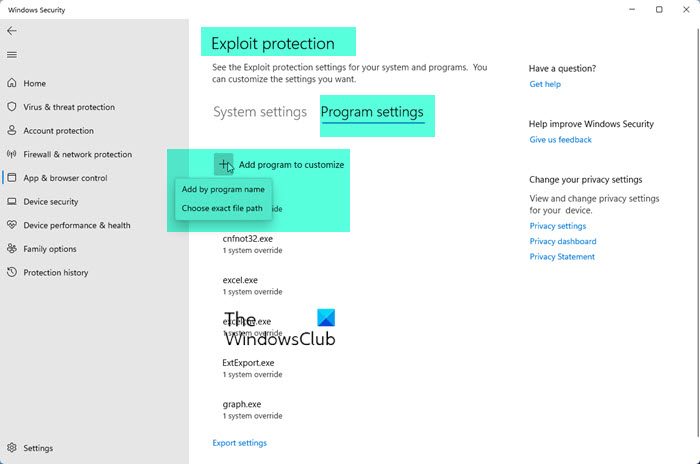
Add or Exclude an app in Exploit Protection
There have been reports from users who experienced a lag in gaming performance when the feature was enabled. Windows notes that some security mitigation technologies may have compatibility issues with some applications. As such, you can disable the protection for such apps.
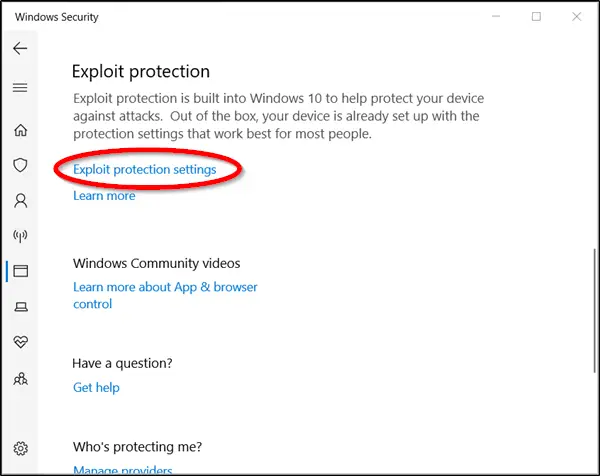
To disable Exploit Protection for select apps in Windows 11/10:
- Open Settings
- Click Update & Security
- Navigate to Windows Security
- Select App & browser control
- Scroll down to find Exploit Protection Settings link
- Click on it.
Now you have to add an exception to Exploit Protection Settings
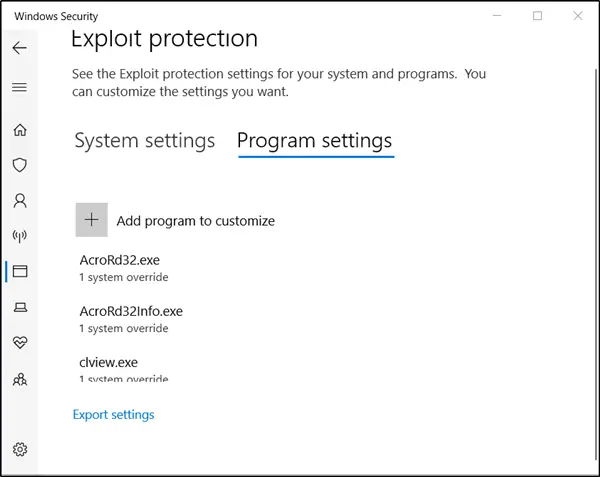
Switch to ‘Program Settings’ tab. The tab allows you to choose the app you want to apply mitigations to.
If the app you would like to configure is not listed, choose ‘Add a program to customize’ and then choose how you want to add the app.
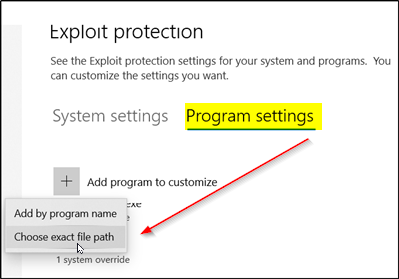
You will get two options-
- Add by program name – lets you apply mitigation to any running process with that name. However, you must specify the file with its extension. Also, you can enter a full path to limit the mitigation to only the app with that name in that location.
- Choose exact file path – uses a standard Windows Explorer file picker window to find and select the file you want.
In this case, we use a standard Windows Explorer file picker window, i.e., the second option to go to the file for which we would like to add an exception.
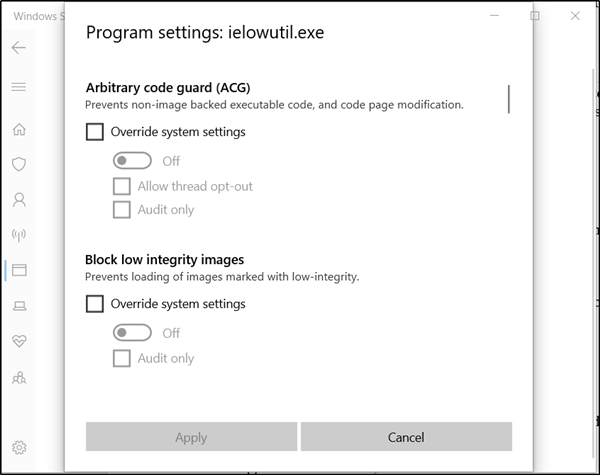
Once found and selected, a long list of settings will open. Here, you’ll see a list of all the mitigations that can be applied. For example, choosing ‘Audit’ will apply the mitigation in audit mode only.
To exclude the app from Exploit Mitigation completely, uncheck the boxes marked against them.
Repeat the procedure for all the apps you would like to exclude from Exploit Mitigation.
Click ‘Apply‘ when you’re done setting up your configuration.
Changes made will require you to restart the file.
So, close and exit, and restart the file. Also, please note that you’ll need admin rights to make the desired changes.
I hope you find the instructions easy to understand.
Read: How to add a File or Folder to the Antivirus Exception List.